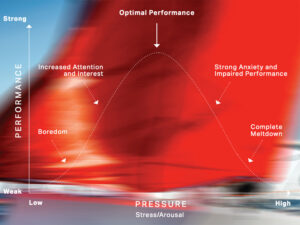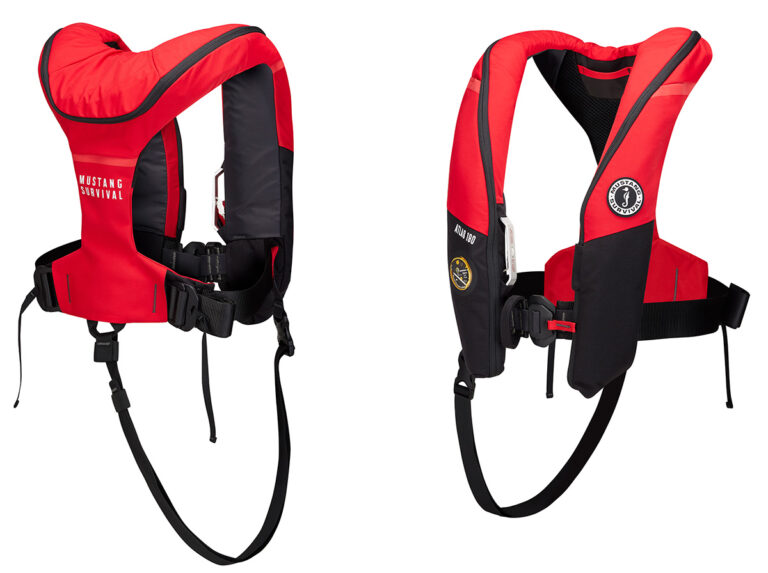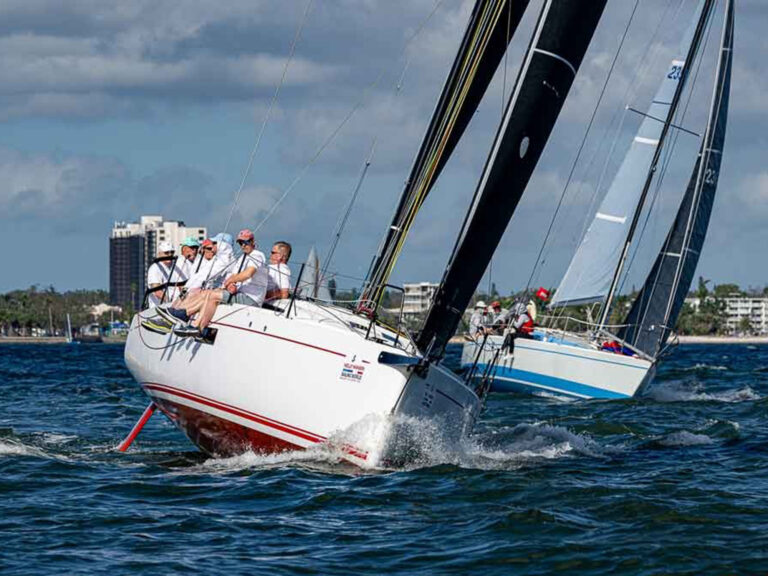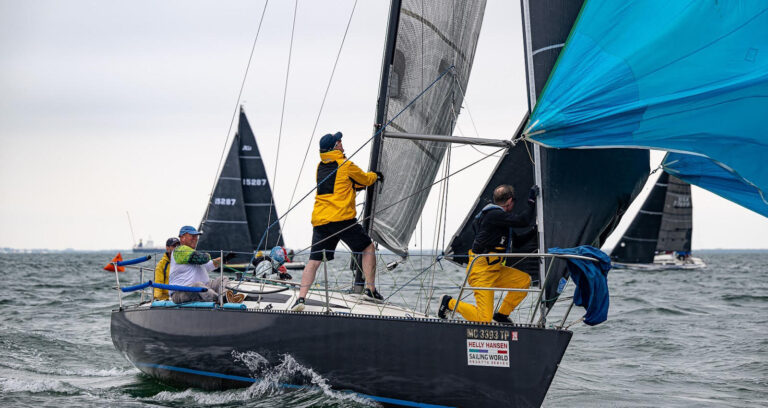Video courtesy of Zerogradinord
At the 2016 Melges 24 Worlds, team Embarr dominated the scoreboard, winning the event without even having to sail the final race. They were particularly strong downwind. We asked Embarr tactician Dave Hughes to talk about their downwind technique.
Give us some background on what we’re seeing.
Stu [McNay] is steering, and Prof [Maurice O’Connell] is sitting just in front of Stu and is flying the chute. Conor [Clarke] is the next person forward, trimming the jib, then Aoife [English], and then me. Conor and Aoife are largely in charge of weight placement. Though I’m forward on this particular run, my job is tactics —positioning within the fleet, gybe points, navigation and things of that nature. I’m also telling Stu what type of modes I want him to sail, what’s effective in the moment and when transitions are coming up.
Talk us through what’s going on in the video
The challenging part here is that the waves are going the same speed as the boat, meaning there are times when the waves are a hindrance, and times when they’re helpful. If you can toggle between those at the correct times, you’ll have masterful downwind legs. The clip begins with the team is hiking hard, the boat flat, perhaps heeled slightly to windward, which allows the boat to release on the wave. At this point, we have made a decision to bear off and ride a wave.
About eight seconds in, we call for a downturn, followed by an upturn. It’s all about when to take the downturn, how long to hold the downturn, and when to steer out of the ride. That’s the magic. Here, you can see the crew weight shift from the downturn, where everyone is hiking, to the upturn where everyone moves quickly to leeward to bring the boat back up. Stu and I move the most, as we both have clearer paths and we mostly only need a moderate amount of weight to leeward.
Stu’s movements are a radical departure from what we usually see helmsmen doing in sportboats. What’s he up to?
I’ve had other drivers comment that the one really noticeable thing, beyond the crew work and the waves and all those dynamics, is Stu’s ability to drive from either side of the boat. Not everyone can do it. It’s something we’ve taken away from the 470. The crew is really committed to the weather side and hiking, so we kind of get locked in at times. Stu, on the other hand, can move his weight around more easily than anyone else on the boat. He’s often standing up, sailing the boat with his weight, like a surfboard. Another way to look at it is that we’re the gross tune for weight movement, and he’s the fine tune. What he’s doing isn’t easy. He still has to adjust the main—you’ll see him paying out a little sheet around second 14 in the clip—and make the boat track where he needs to. But notice that his movements aren’t making him lose any reference with the rudder. If the weight shifts are done correctly, he doesn’t have to push or pull the helm to make course corrections.
What kinds of onboard conversations are going on?
The communication onboard is pretty succinct. The spinnaker trimmer is talking about if he’s at the low end of his ease, if he’s got good pressure, can take depth and so on. Stu is in conversation about what he’s doing with the boat. There are times when Stu says things like, “I need more weight. Keep holding the hike.” Often the helmsman feels things that the four of us can’t feel right away. He knows there’s pressure on the boat, and we need to keep hiking. I’m telling the crew how much hike I need and when I need it. For instance, I might say, “hiking, harder, harder, harder, press, press, hold, hold, still holding, on the wave, on the wave, still holding, and now…backs up.”
“Backs up” means we’re easing up on the hiking, and we’re starting the upturn, though we might go straight into hiking again in a moment. Stu knows he’s on the wave, but there’s confirmation because I’m seeing how the wave is developing, he’s seeing how the wave is developing—the whole five-person team needs to be on the same page. At some stage, we recognize that the ride’s over, and we need to start up again. At around 25 seconds into the clip, you can see me waving Stu back up.
So I’m mostly involved in telling the team when I need hike, what’s happening with our VMG, what mode needs to be sailed, relative performance, positioning with other boats and what I’m thinking, tactically. Even when I’m looking forward, I’m still talking to Stu about the tactical plan, potential threats, somebody I want to jibe on, breeze, waves, etc. In case you were wondering what I’m doing around second 27, I’ve been able to move into the boat, and I take advantage of that time to use the kelp cutter.
Tell us about the tactics that going on around the :25 mark
There we are trying to use a few waves to soak inside the group to our left— Full Throttle and the Italian team Maidollis 3 —and then jibe in front of them. At :30, I put my hand up, telling Stu, “That guy’s on our breeze. You must hold, hold. Now let’s go on this next wave.” Stu then knows he’s got to pick one wave from now or two waves from now to move. When I’m doing my job appropriately, I’ll say to the team, “Looking for a spot. Stand by — next five lengths, jibe on your call.” That means, “Hey listen—you’ve got five lengths here. If you get a nice wave in those five lengths go for it. But I don’t really want to go further than five lengths.” That allows him to pick a spot. It’s not just, “Ok, I’m jibing because I’m X number of boat lengths away from another boat.” Instead, I’m thinking, “Ok, I’m jibing because I want to get that wave over there in 10 lengths, on starboard. So I’m going to jibe here so that I link up with it and make the next gain.”
How did you end up on this run?
I believe we passed three to five boats on this run and were able to gain enough distance that we could pounce on the favored gate. It turned into a nice keeper result.









